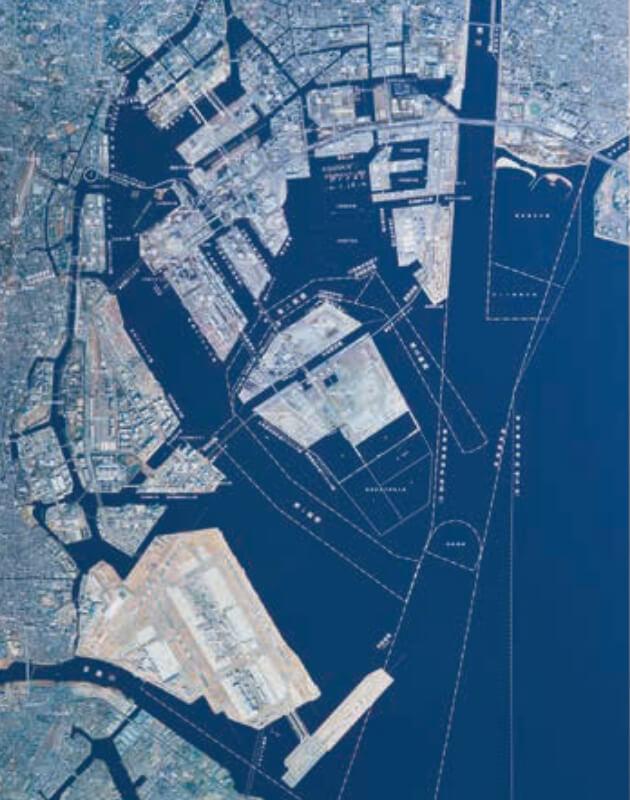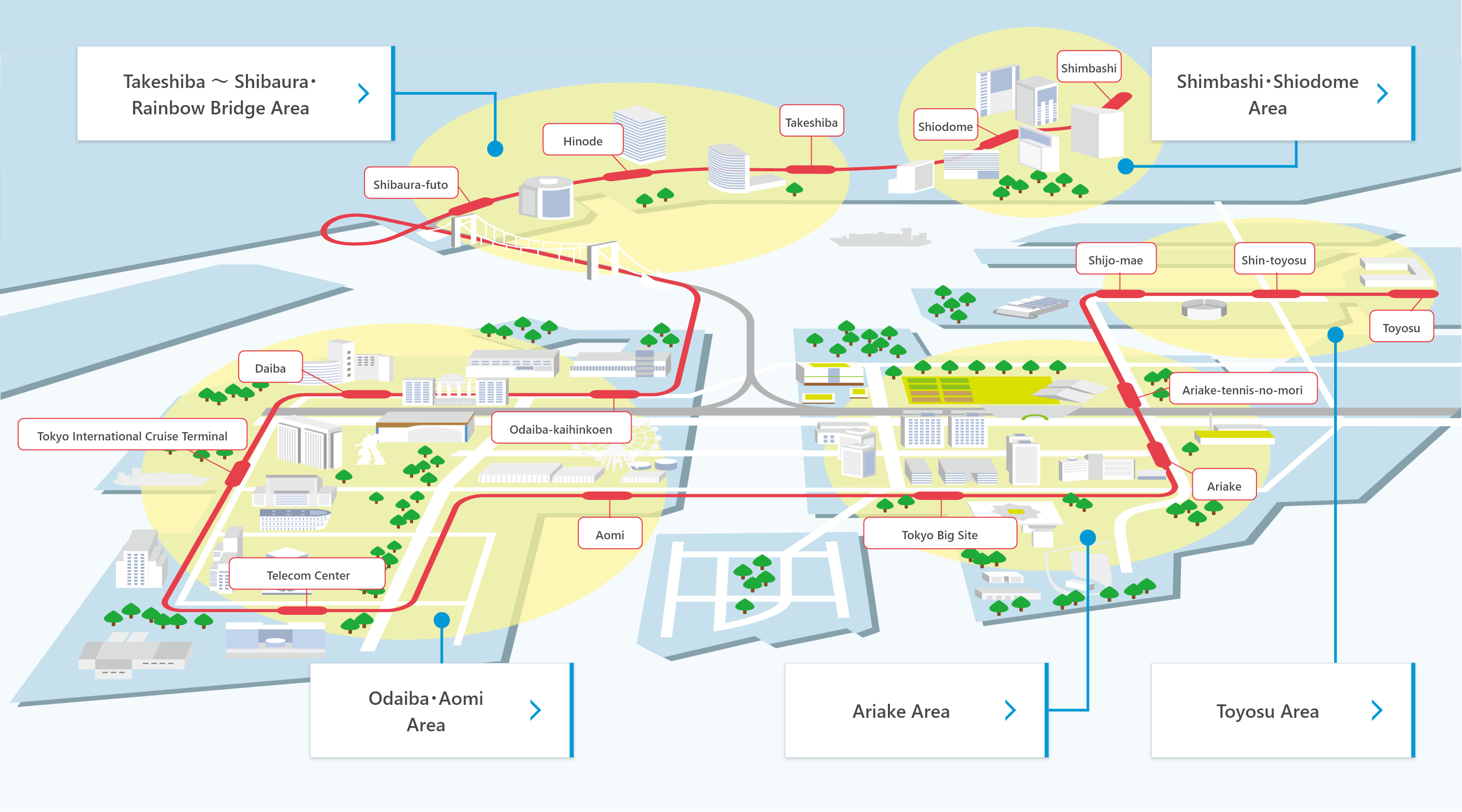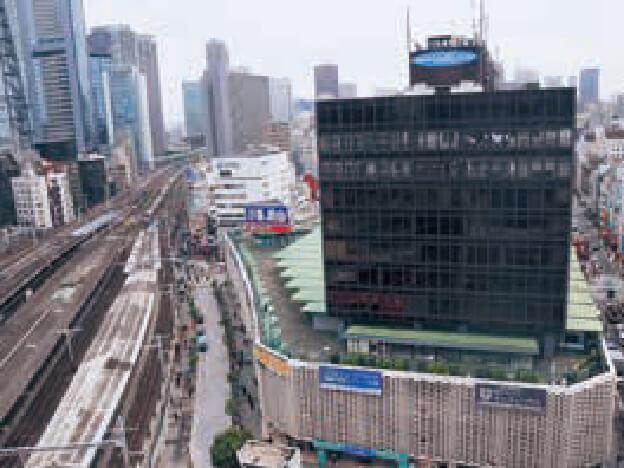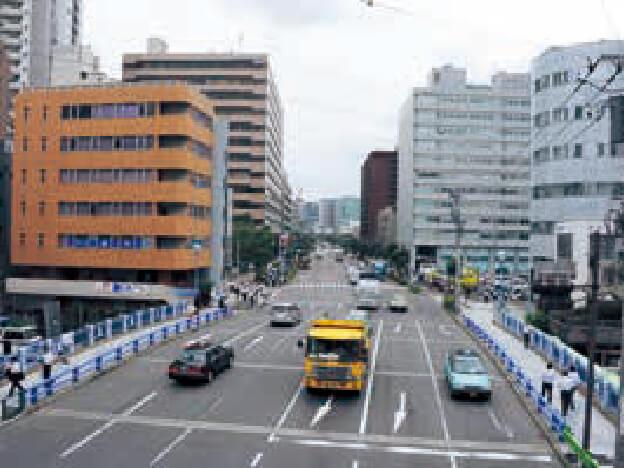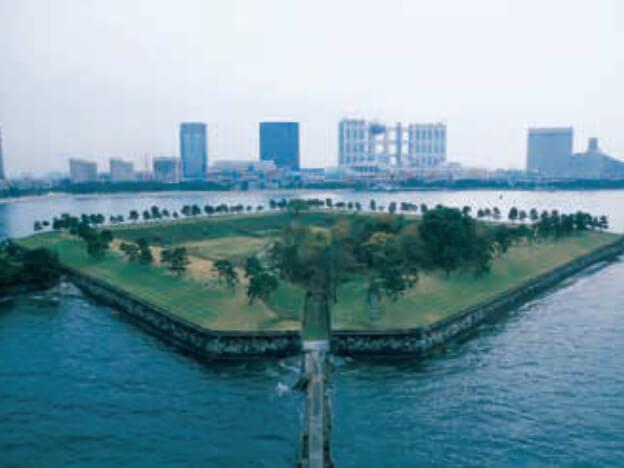- Top
- Event Info
- Areas linked by Yurikamome
Areas linked by Yurikamome
Area Guide
Attractive Cutting-Edge City
Here lies Tokyo's sea with its infinite possibilities
Tokyo has been growing as the capital of Japan. Since the latter half of the 20th century, many major international cities have been making use of waterfront spaces such as ports and rivers as not only tourist resources and urban landscapes, but as well as residential spaces and business clusters to enhance the attractiveness of the city.
When viewed from inland, the Tokyo coastal area located on the southeastern part opening out to the sea, is indeed the waterfront of Tokyo. Mainly used for port-related attractions, logistics facilities, factories, etc., this area is however drawing high expectations for its infinite possibilities as an area creating and delivering new energy and attractions with economic globalization, sophistication of information, and growing interest in waterfront spaces and urban landscapes.
For example, in the area from Shimbashi to Shibaura, which is linked to the Rinkaifukutoshin area (Tokyo Water Front City) by Rainbow Bridge, infrastructures have been developed and redevelopments carried out in conjunction with the development of the coastal area. Mixed-use areas as represented by Shiodome Sio-Site have sprung up and waterfront spaces like Takeshiba Pier which are both bustling and relaxing, have been redeveloped.
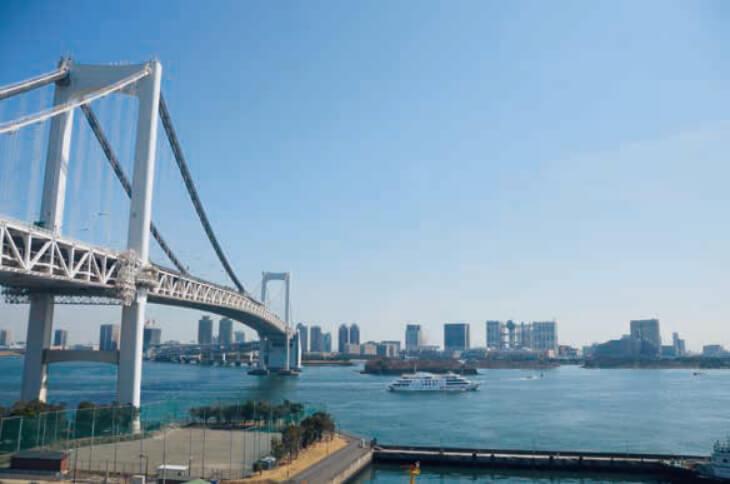
The Rinkaifukutoshin area continues to evolve together with the coastal areas of Shimbashi and Shibaura.
The Rinkaifukutoshin area is located in the center of Tokyo's waterfront. It has been undergoing continuous development ever since it was picked for development as Tokyo's seventh subcenter after Shinjuku, Shibuya, Ikebukuro, etc. in the Tokyo Metropolitan Government's "Phase 2 Tokyo Long-term Plan" (1986) to transform Tokyo from a city concentrated in one area to a multiple core city structure .
Two railways, Yurikamome and Rinkai Line, and two trunk roads, Tokyo Metropolitan Expressway and Tokyo Wangan Doro have been developed and expanded, which has remarkably enhanced access from the center of Tokyo. Close to Haneda Airport and also connected to Narita Airport by expressways, the Rinkaifukutoshin area serves as a node for international and wide-area traffic.
Broadly divided into four areas (Daiba, Aomi, Ariake Kita and Ariake Minami), research facilities, convention facilities, and recreational facilitie are springing up in the Rinkaifukutoshin area which already boasts commercial facilities, office buildings, high-rise apartments, in efforts to build a city offering various amenities by maximizing the use of the attractiveness of the waterfront.
Furthermore, various competition venues are planned to be constructed for the 2020 Tokyo Olympics and Paralympics, drawing attention to this area showing metropolitan Tokyo's new face of the 21st century to the world.
